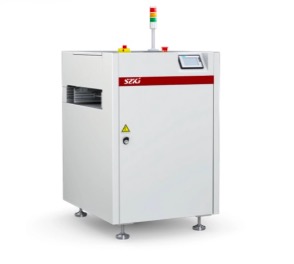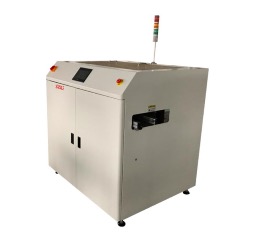Introduction
Modern electronics demand sophisticated manufacturing techniques to meet the need for compact designs, high performance, and scalability. SMT manufacturing (Surface Mount Technology) has emerged as the preferred method for assembling electronic components, revolutionizing industries such as consumer electronics, automotive systems, telecommunications, and healthcare. With its unmatched precision and efficiency, SMT manufacturing is paving the way for innovative technologies and smarter devices.
What is SMT Manufacturing?
SMT manufacturing is the process of mounting electronic components directly onto the surface of printed circuit boards (PCBs). Unlike traditional through-hole technology, which requires components to be inserted into drilled holes, SMT eliminates this step by placing components flat against the PCB. This automated process not only accelerates production but also enables the creation of high-density and highly functional circuit boards.
The SMT Manufacturing Process
1. Solder Paste Application
Using a stencil, solder paste is applied to designated areas on the PCB. The paste contains solder particles suspended in flux, providing the necessary adhesion and conductivity during assembly.
2. Component Placement
High-speed pick-and-place machines position surface-mounted components on the PCB with remarkable accuracy. These machines can handle thousands of components per minute, ensuring precision.
3. Reflow Soldering
The PCB is passed through a reflow oven, where controlled heat melts the solder paste, securely bonding the components to the board.
4. Inspection and Quality Control
Automated Optical Inspection (AOI) and X-ray systems verify alignment, solder quality, and component functionality, ensuring that every PCB meets stringent standards.
5. Testing and Integration
The final assembled PCB undergoes rigorous testing before being integrated into its respective product, whether it’s a smartphone, automotive system, or medical device.
Advantages of SMT Manufacturing
1. Space-Efficient Designs
SMT supports the creation of compact devices by allowing components to be densely packed on smaller PCBs.
2. Rapid Production
The automation inherent in SMT manufacturing enables high-speed assembly, ideal for large-scale production without compromising quality.
3. Cost Savings
Reduced labor costs, material waste, and streamlined processes make SMT a cost-effective solution for manufacturers.
4. Enhanced Durability
Surface-mounted components are less prone to physical stress, ensuring improved reliability and longevity.
5. Versatility
From small resistors to advanced integrated circuits, SMT accommodates a wide range of components, making it suitable for diverse applications.
Applications of SMT Manufacturing
Consumer Electronics
SMT manufacturing powers devices like smartphones, tablets, gaming consoles, and wearable technology, delivering compact designs and high performance.
Automotive Electronics
Modern vehicles rely on SMT for systems like advanced driver-assistance (ADAS), engine control units, and infotainment modules.
Medical Devices
Precision healthcare equipment, including imaging devices and portable health monitors, depends on SMT for reliability and compactness.
Telecommunications
5G network infrastructure, routers, and IoT devices benefit from SMT’s ability to produce high-frequency circuit boards.
Industrial Automation
SMT supports smart factories and IoT-enabled machinery by providing robust and scalable PCBs for industrial equipment.
Emerging Trends in SMT Manufacturing
1. Miniaturization
The demand for smaller, faster, and smarter devices continues to push SMT toward micro-assembly and ultra-compact component handling.
2. Flexible Electronics
Wearable devices and foldable screens are driving SMT’s adaptation to flexible PCB designs, enabling innovative applications.
3. Sustainable Manufacturing
Lead-free soldering and energy-efficient production methods are reshaping SMT manufacturing to meet global sustainability goals.
4. Industry 4.0 Integration
Smart factories equipped with AI-powered inspections, IoT monitoring, and robotics are revolutionizing SMT production, ensuring precision and efficiency.
5. Advanced Materials
Emerging materials like heat-resistant substrates and advanced solder alloys are expanding SMT’s capabilities for demanding applications.
Future Outlook
The evolution of SMT manufacturing is intertwined with the future of electronics. As augmented reality (AR), artificial intelligence (AI), and ultra-fast communication networks advance, SMT will play a pivotal role in assembling the high-performance components that power these technologies. Innovations in automation, materials science, and eco-friendly practices will continue to push the boundaries of what SMT can achieve.
Conclusion
SMT manufacturing is the foundation of modern electronics production, enabling compact, efficient, and reliable designs that power the technologies we rely on daily. Its precision, adaptability, and scalability make it indispensable across industries, from consumer electronics to telecommunications. As SMT evolves alongside emerging trends, it will remain a driving force behind technological progress and innovation.





